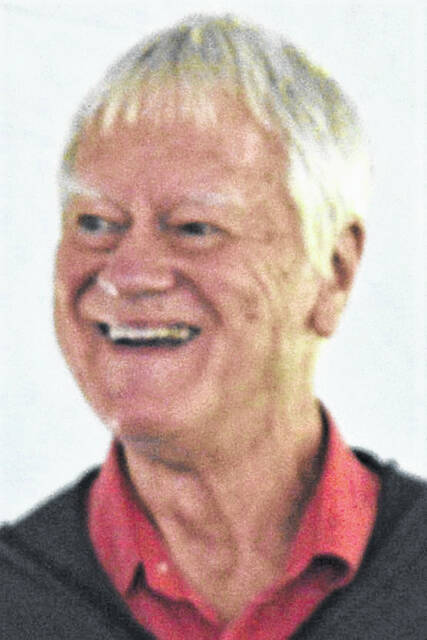
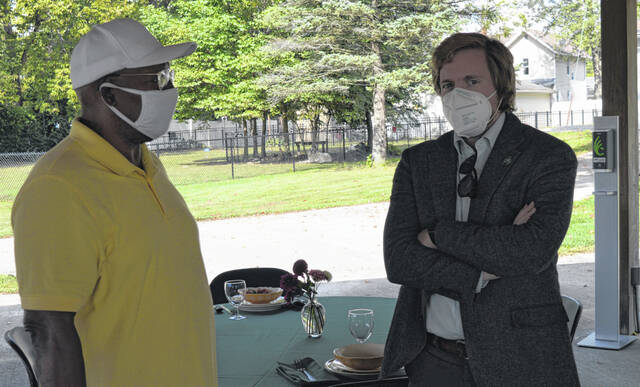
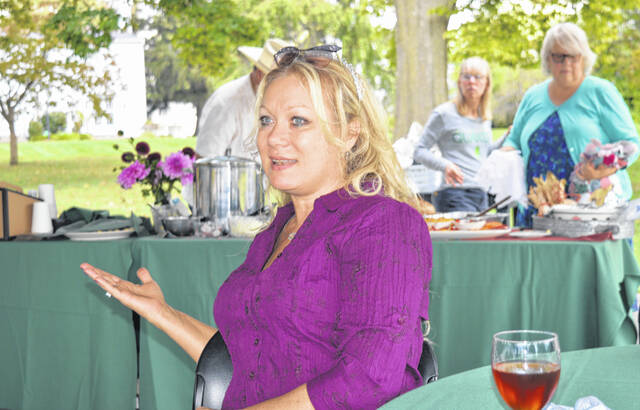
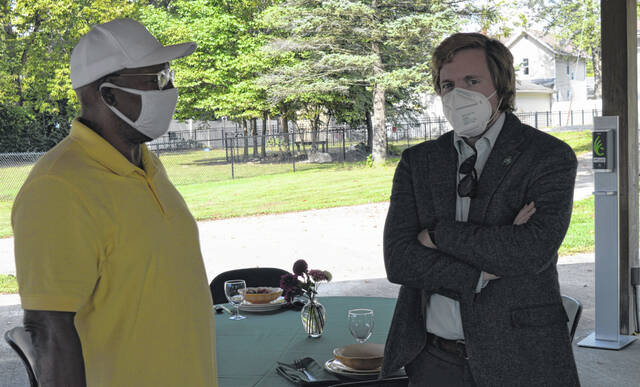
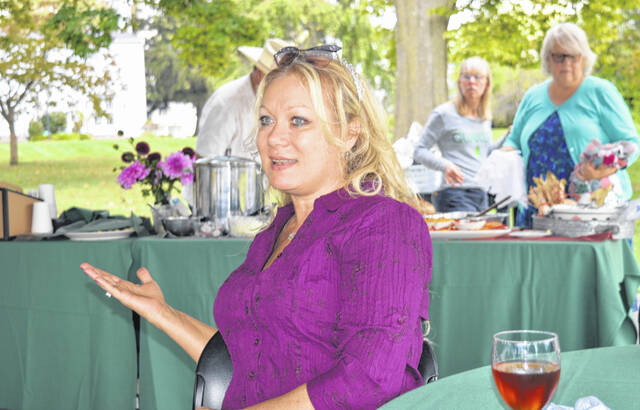
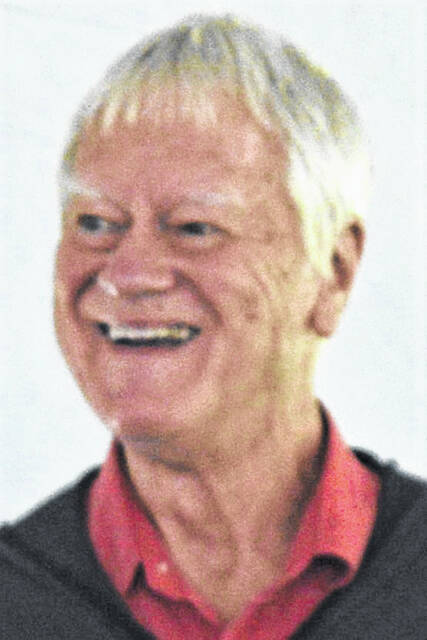
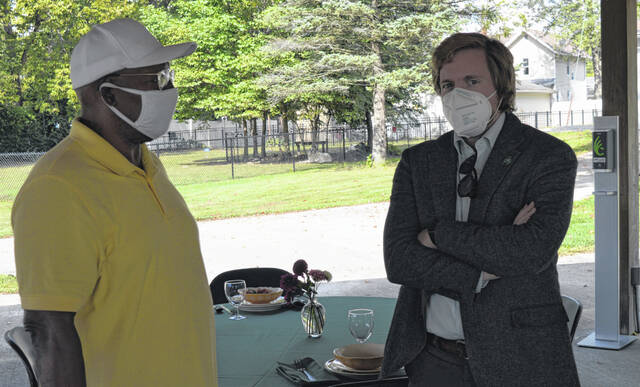
WILMINGTON — Local people interested in building a more just community came together for a farm-to-table luncheon followed by a lively discussion that provided food for thought.
Featuring locally grown dishes, the luncheon was part of the annual Westheimer Peace Symposium this week at Wilmington College.
The direction of the dialogue was set in part by Art Brooks who asked to say something in terms of the black community in Wilmington.
He thinks there’s an invisibility to the black community here.
“We’re on the outside looking in a lot of the time on the activities. We’re always like an afterthought when there’s projects,” said Brooks.
As an example, he said it tends to be late in the planning process for festivals and other events when someone brings up a need for entertainment that relates to the black community.
The local black community will feel more a part of the wider community once there is proactive planning to include them in community events and projects, said Brooks. He called it a big issue.
Brooks also made a second recommendation. Local organizations can “audit” themselves along racial lines to see whether there are disparities.
“Do not assume because there’s no noise, there’s no problem,” he said.
An example of such an audit can be found with the Wilmington City Schools (WCS) district, said Brooks, who’s chair of the WCS Diversity Committee. A school audit can look into the graduation rate for young people of color, the retention rate, how many are going to college or further training, who’s not going to college, who gets suspended, etc.
For those organizations willing to examine themselves, it’s a place to start, he said, “and just see what happens.” The question ‘Are we being inclusive and diverse?’ can be asked by everything ranging from social services agencies, the business community, city hall, realtors, civic groups, churches, and school districts, according to Brooks.
Bob Henson of Henson Family Farm LLC in the New Vienna area followed up, saying there was a concrete example right there at the luncheon — of the four people who brought food, three are “old white guys,” said Henson, including himself in that category.
“Where is the African American farmer? Where is the African American woman farmer? Where do they have access to the capital and the land to be able to do what I have the benefit of being able to do?” he asked.
Henson said “white economic privilege is so pervasive in our culture and I’m a guilty part of that because I’m a local landowner.”
The topic of agriculture played a big part in the discussion.
Cassi DeHart Carter, who heads up the local Community Gardens project, agreed with Henson that opportunity in agriculture is limited.
She’s talked to 10 farmers and “it’s almost impossible just to rent a few acres of land to do what I want to do because they’re monoculturing and it’s written in stone.” Monoculture farming is a form of agriculture based on growing only one type of a crop at one time on a specific field.
Lucy Enge mentioned the prospect of “incubator businesses” in agriculture, “something I think could happen here.”
It could involve “allowing small farmers to come in, have an acre or two and really get a handle on what it looks like and have a supportive structure, and then go out and continue to grow.”
Brooks encouraged individuals to ask their own contacts the diversity question.
“Sometimes it might be uncomfortable because they’re not talking about diversity in your group. You might be the fly in the ointment that says, ‘Hey you know, can we do things different or should we do things different? Or, can we connect with another group and we can have a coalition.’ I heard some coalition talk here,” Brooks said in reply to a question.
Brooks continued, “You got the homeless situation here. You can ask the question, ‘How does that help the homeless?’ ‘How are we helping the homeless?’ ‘How are we helping Sugartree [Ministries]?’ ‘How are we helping the homeless shelter?’ Ask those questions because, I think if we were honest, business-as-usual does not work for everybody.”
After that comment, peace symposium presenter Amaha Sellassie who was at the lunch started snapping his fingers, his way of showing agreement.
Brooks mentioned how a couple decades ago a lot of Hispanics, Mexicans and Puerto Ricans worked at the Wilmington Air Park, “and they were probably more ignored [by the wider community] than the black community.
“Look at your demographics. Who do we have now, who can we include that we haven’t included?”
Reach Gary Huffenberger at 937-556-5768.




